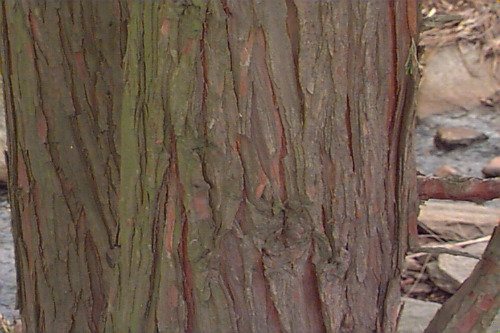Thujopsis dolobrata
Hiba Arborvitae, False Arborvitae
Cupressaceae
ExpandHabitat
- native to Japan and China
- zone 6
Habit and Form
- coniferous evergreen
- medium-sized tree
- 30' to 50' tall, 10' to 20' wide
- dense pyramidal shape
Summer Foliage
- foliage is simial to Thuja, but larger
- the scale-like leaves are bright or dark green above with white markings underneath
- scale-like leaves overlap forming flattened, rope-like shoots
- brachlets are arranged in opposite rows in flattened sprays
Autumn Foliage
- evergreen with little color change in winter
Flowers
- not of any ornamental significance
Fruit
- woody cones
- globe shaped, 0.5" to 0.75" long
Bark
- reddish brown
- furrowed into thin strips
- attractive when visible
Culture
- prefers moist, acid soil
- needs humid, cool air
- site plant out of sweeping, drying winds
- full sun to light shade
Landscape Uses
- rarely available
- as a specimen
- for the plant collector
Liabilities
- potential lack of cold hardiness in difficult zone 5 sites
- only adapted well to zones 6 and 7
- wind burn in windy locations
- hard to locate to purchase
ID Features
- evergreen
- pyramidal habit
- Thuja like scales, foliage with white markings on the leaf underside
Propagation
- by seed
- cuttings are easy to root
Cultivars/Varieties
var. hondai - This form is a wide-spreading, large tree with lustrous green, scale-like foliage arranged in dense branchlets. It reportedly grows much larger than the species and features larger cones.
'Aurescens' - Rarely offered, this cultivar sports yellow-gold foliage.
'Nana' (also known as 'Laetevirens') - The most common form in commerce, this plant assumes the proportions of a compact arborvitae. It is a dwarf, mounded plant which slowly reaches 3' tall and is clothed with rough scaly leaves which turn from bright green to bronzy-olive in winter.
'Variegata' - Often seen in the catalogs of specialty nurseries, this novelty form has creamy white regions arranged among the sprays of scale-like foliage. More than one clone probably resides under this name, as the habits of individual plants can vary widely.

